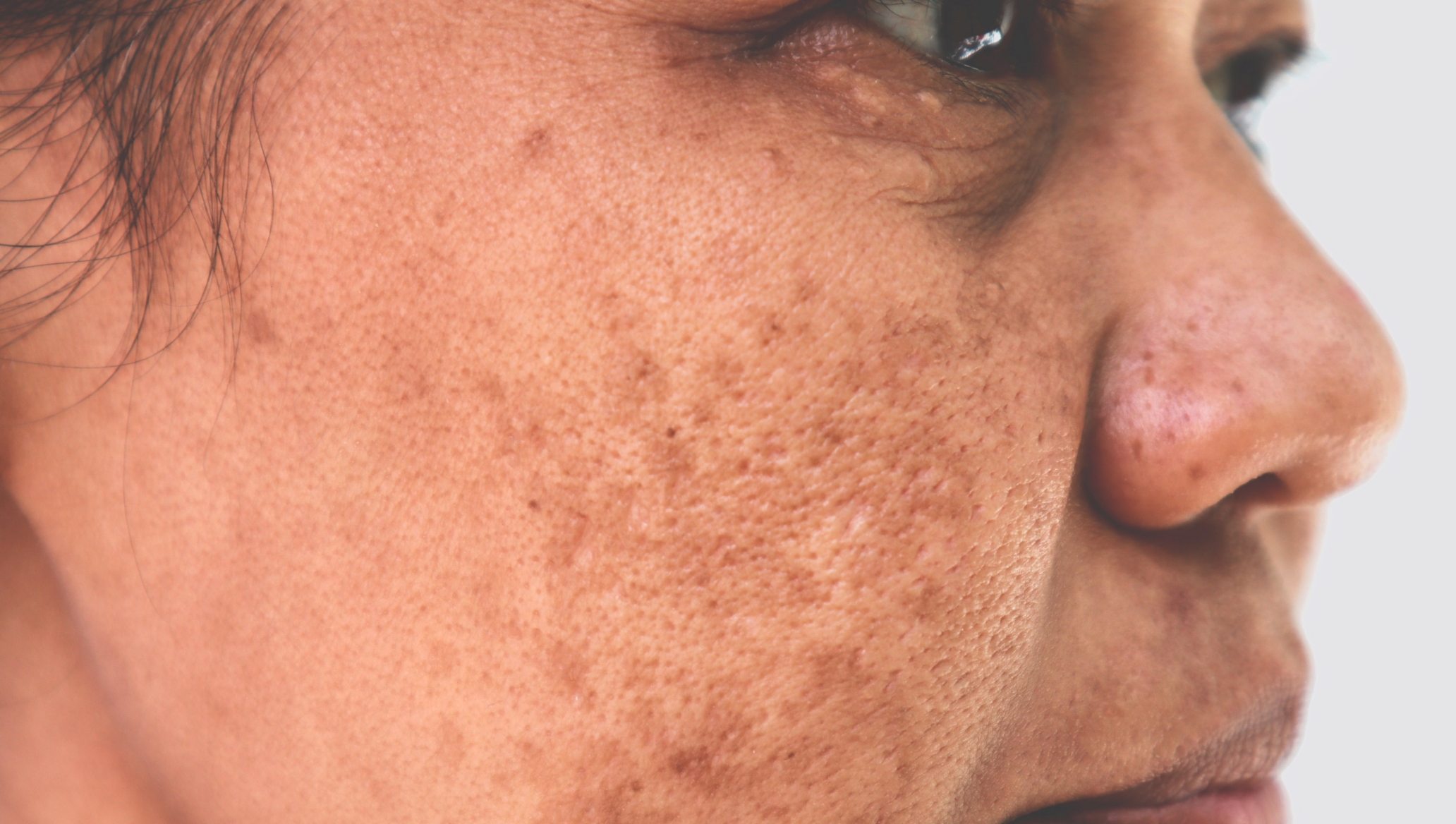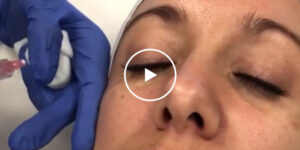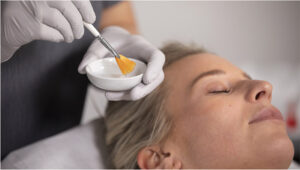A pretty sprinkling of freckles across your nose and cheeks when you return from a sunny holiday may well add to your healthy glow, but larger areas of discolouration can make your complexion appear uneven and unflattering. Indeed, while we all should be protecting our skin year-round from the sun, summer can be a tricky time to keep our skin tone even and healthy. With the sunnier weather upon us now, we thought we’d put together some advice about this common issue.
What is hyperpigmentation?
Hyperpigmentation is the term used to describe areas of increased pigmentation on the skin. Common benign conditions are age/liver spots (solar lentigo), post inflammatory hyperpigmentation, melasma and freckles. There are also serious conditions such as melanoma. It is important to seek expert medical advice to get the correct diagnosis and be recommended the right treatment. If you are worried about a mole and notice that it is asymmetrical, irregular in colour, border, expanding in size please speak to your GP or dermatologist urgently for assessment.
How does hyperpigmentation occur?
Hyperpigmentation occurs when your pigment cells (melanocytes) produce excess melanin in your skin via a process called melanogenesis. Melanin is then taken up by skin cells in epidermis called keratinocytes. It can also be deposited in the deeper layer of your skin (dermis).
Depending on the type of hyperpigmentation, there are many factors that can lead to worsening of your condition.
Melasma is the most common cause of facial hyperpigmentation and is characterised by symmetrical, blotchy, brownish discolouration that becomes more noticeable after certain triggers. The most important triggering factor for melasma is sun exposure. Other factors include heat, hormonal factors (pregnancy and hormonal contraceptives) and photo-sensitising medications. There is also a genetic predisposition with melasma.
Age/liver spots (solar lentigo) are sun-induced lesions, most prominent on sun exposed areas such as the face, forearms and back of the hands. It can occur from 30 years of age and is more common in fair-skinned individuals.
Post-inflammatory hyperpigmentation (PIH) is discolouration after skin injury (e.g burn) or due to inflammatory skin disorders such as acne and eczema. It is most observed in darker skin types. PIH can be made worse by sun exposure and being on photo-sensitizing medications.
How can hyperpigmentation be prevented?
Protecting your skin from sun exposure is one of the most important factors in preventing hyperpigmentation. It can also reduce your risk of skin cancer and premature ageing.
The sun’s damaging rays can affect our skin even through cloud and glass, so it’s important to use sunscreen all year round and when indoors especially if near a window.
It is important to wear sunscreen that provides full protection from UVA, UVB, visible light and to infrared-A. We recommend Heliocare 360 which is a professional range of sunscreen. It contains Fernblock®, which is a powerful natural ingredient from the fern Polypodium Leucotomos. Fernblock® utilise this natural plant power to help the skin in many ways, including protecting skin cells from harm caused by the sun and shielding our skin cell DNA. Please remember to reapply your sun cream every two hours or after swimming or sweating. If you would like more information on Heliocare 360 sunscreens, please contact us at Waterhouse Young.
Other ways to protect your skin from sun exposure are to seek shade when appropriate, especially when the sun’s rays are the strongest between 10am and 2pm. Also, when possible, remember to wear a lightweight and long-sleeved shirt, a wide-brimmed hat, and sunglasses with UV protection. For extra protection, clothing with an ultraviolet protection factor (UPF) can be helpful.
How can existing hyperpigmentation be assessed and managed?
At your initial consultation, our aesthetic practitioners use a computerised Visia skin and complexion analysis. This technology utilities multi-spectral imaging to detect pigmentation, UV damage and signs of ageing on and beneath the surface of the skin that is not visible to the human eye. It also analyses your skin texture, pores, spots, redness, and porphyrin levels. The results help us to formulate correct skin treatment plan for you.
Depending on the type of hyperpigmentation, there are many ways in which it can be treated. It is very important to be on the right skincare regime as well as having correct in-clinic procedures.
For conditions such as melasma, PIH and age spots, it is important that your skincare regime contains the right skin active ingredients such as tyrosinase inhibitors which help to suppress new melanin production. Examples of tyrosinase inhibitors are retinoids, hydroquinone, azelaic acid, alpha arbutin, tranexamic acid, kojic acid, to name a few. Some are available on prescription only. At consultation, our aesthetic practitioners will formulate a skincare regime that is tailored to you.
At Waterhouse Young, we offer numerous in-clinic treatments which can effectively treat hyperpigmentation. The Formatk IPL photo rejuvenation treatment uses light-based technology to treat pigmentation concerns on the face and body such as age spots and melasma. It can also be used to treat facial redness and thread veins, acne, rosacea and leg veins. By allowing greater control over tip cooling intensity, Formatk delivers a more comfortable treatment with less downtime.
Our aesthetic practitioners can also offer a number of skin peels to aid treatment of hyperpigmentation, including the Perfect Peel. This is a medium depth peel that is a doctor lead treatment where a booster can be added to enhance your results.
The Perfect Peel blends glutathione, kojic acid, TCA, retinoic acid, salicylic acid, phenol, and a blend of minerals and vitamins, including vitamin C. Glutathione is a great antioxidant, which helps skin to protect from oxidative stress and rejuvenate skin. Glutathione is also proven to reverse melanin’s metabolism, lightening dark pigmentations. Kojic acid is an effective tyrosinase inhibitor helping to lighten pigmentation. TCA, phenol and retinoic acid reduce signs of aging and correct pigment problems, while salicylic acid exfoliates the skin and reduces inflammation.
The HydraFacial is a non-invasive skin resurfacing and rejuvenating treatment which combines cleansing, exfoliation, extraction, hydration and antioxidant protection. This treatment is ideal for everyone and can be used for treating fine lines and wrinkles, as well as targeting hyperpigmentation and oily, acne-prone skin. HydraFacial also has the benefit of immediate, deeply hydrating results, and for a limited period, all our HydraFacials will include Celluma LED therapy at no additional cost.
To discuss hyperpigmentation or any other skin concern you may have with one of our medically trained aesthetic practitioners, please contact us to book a consultation.






